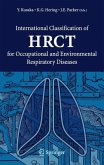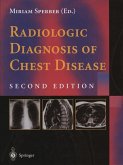This text is in no danger of incomplete identification of where it should fit in the bibliographical spectrum of radiological monographs. It can be placed in many areas - radiology of the chest, !lccupational diseases, pneumoconioses, clinical medicine. In each, it would be informative and helpful. In part, this is inherent in the subject but, equally, it reflects the good judgment ofthe editors in selecting both subjects to be covered and contri butors who could succeed in their delineation in terms of current usage and current issues. Radiology of lung diseases has deep roots. Roentgen announced his dis covery of x-rays in 1895. By the next year, the new technique was used to study lung disease. On October 1, 1896, Francis H. Williams was able to report in the Boston Medical and Surgical Journal, "I have examined about 40 cases of pulmonary tuberculosis ... " In his classic text, The Roentgen Rays in Medicine and Surgery, published in 1901, thoracic diseases took pride of placein the 658-page volume. It is of further interest that just as Glyn Thomas here emphasizes the importance of technique, so did Wil liams in his writings.








